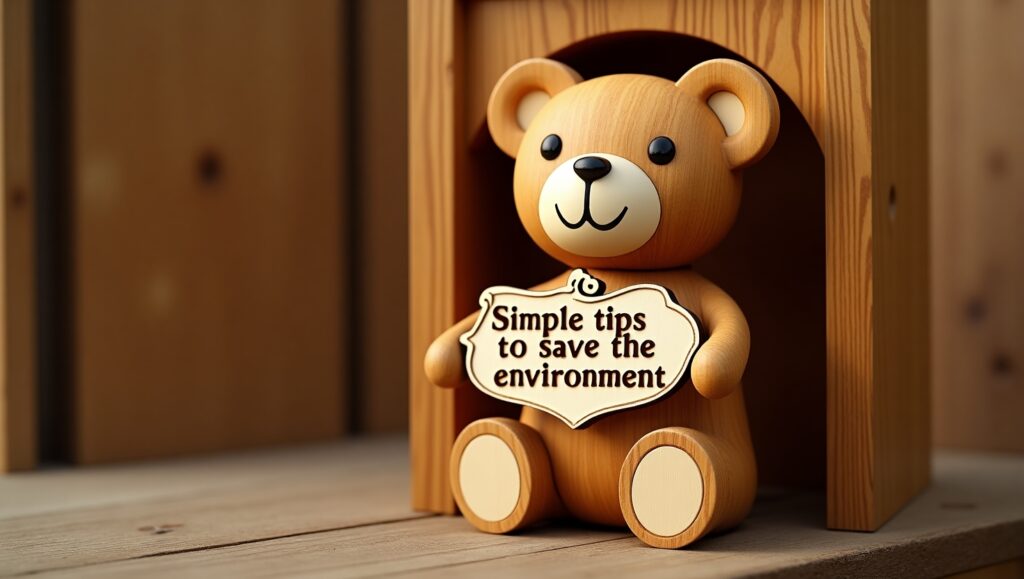Protecting the environment might seem like a daunting effort, but it starts with simple steps we do every day. From the air we breathe to the water we drink, our planet offers everything we need. Unfortunately, human acts like pollution, deforestation, and overconsumption are jeopardizing the Earth’s natural equilibrium. The good news is—you don’t need to be an environmental specialist to make a difference. With a few simple lifestyle modifications, anybody can contribute to a healthier Earth. Here are some straightforward and efficient strategies to help conserve the earth.
Reduce, Reuse, Recycle
This golden rule is more applicable today than ever. Reducing waste includes consuming less and eliminating single-use items like plastic bottles or paper cups. Reusing objects like jars, canvas bags, or containers helps extend their life. Recycling guarantees that waste like paper, glass, and plastic are recycled into new goods instead of ending up in landfills. Small efforts, like using a refillable water bottle or sorting waste, have a tremendous impact.- Conserve Water
Water is a precious resource that many people take for granted. You may conserve water by turning off the tap when brushing your teeth, replacing leaking faucets, and utilizing water-saving gadgets. Even watering plants early in the morning or late in the evening helps avoid evaporation. In areas facing water shortages, these efforts are extremely critical. - Save Energy at Home
Reducing your energy use helps cut down greenhouse gas emissions. Turn off lights when leaving a room, unplug electronics when not in use, and convert to energy-efficient LED bulbs. During summer, open windows instead of operating the air conditioner. In winter, wear warm clothes indoors to reduce heating needs. Using less electricity equals reduced bills and a lower carbon imprint.
Drive Less, Walk More
Transportation is one of the major causes to air pollution and climate change. Walking, biking, or utilizing public transport can greatly cut your carbon emissions. If you must drive, consider carpooling or investing in an electric or hybrid vehicle. Combining errands into one trip also saves gasoline and time.- Plant Trees and Grow a Garden
Trees absorb carbon dioxide, supply oxygen, and create shade that cools cities. Planting trees in your neighbourhood or even in your garden is one of the most important things you can do. You may also plant a little garden at home—whether it’s veggies, herbs, or flowers. Gardening decreases stress, encourages biodiversity, and improves air quality. - Avoid Single-Use Plastics
Plastic waste is strangling our oceans and killing wildlife. Avoid plastic straws, bags, and cutlery whenever feasible. Instead, use reusable alternatives like metal straws, cloth bags, and bamboo utensils. Say no to plastic packaging and support firms that employ sustainable materials. Remember, every piece of plastic avoided counts.
Support Local and Sustainable Products
Buying local decreases the carbon footprint from transportation. It also supports your community and local farms. Choose organic and sustainable items that are grown without harmful chemicals. Look for eco-friendly labels and certifications when buying. Eating seasonal fruit and limiting meat intake can also assist the environment tremendously.- Educate and Inspire Others
One of the most potent methods to affect change is by sharing awareness. Talk to friends and family about why environmental protection matters. Share articles, join clean-up initiatives, and participate in environmental events. Teaching youngsters about sustainability early helps produce a future generation of environmentally conscientious people. - Limit Paper Usage
We live in a digital world, yet paper waste remains significant. Reduce your paper use by transitioning to digital documents and emails. Avoid printing unless absolutely necessary, and print double-sided when you do. Choose recycled paper products and prevent superfluous packing. Saving paper is saving trees—and the ecosystems they support.
Be a Conscious Consumer
Everything we buy has an environmental cost—from production to packaging to delivery. Think before you buy: Do you truly need it? Can you buy it second-hand? Is it eco-friendly? Being attentive of your consumption patterns saves waste and fosters a more sustainable economy. Final Thoughts
Saving the environment doesn’t require spectacular gestures—it begins with simple, consistent choices. Each person’s contribution may seem tiny, but when multiplied over millions of individuals, the impact is immense. Whether it’s turning off the tap or choosing to cycle to work, every action contributes to a greener, cleaner Earth. The future of our Earth is in our hands, and collectively, we can protect it for centuries to come. Key Takeaways: Reduce waste through recycling and conscientious usage. Save water and energy to cut down on resource use. Walk, cycle, or take public transport to reduce pollution. Avoid single-use plastics and promote sustainable products. Spread awareness and lead by example. By following these simple tips, you’re not just helping the environment—you’re helping yourself, your community, and future generations. Let’s take action today for a better tomorrow.

